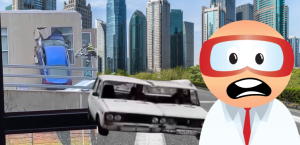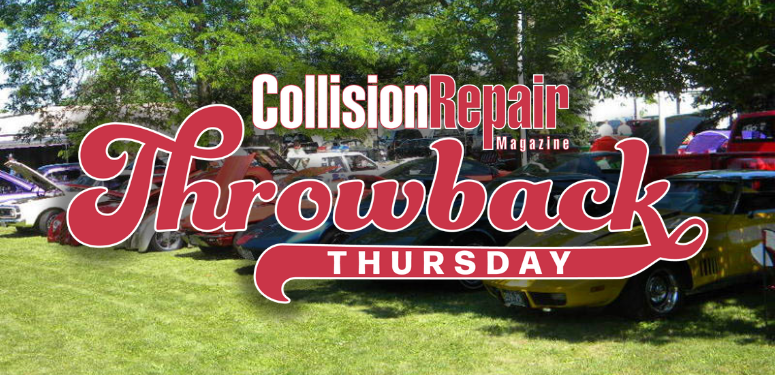By Jeff Sanford
Toronto, Ontario — March 19, 2018 — In this week’s Autonomous Report, an AV fender bender in Pittsburgh and the evolution of the digital body tech.
Well, it seems the age of AVs is not leading to an immediate accident-free world. Pittsburgh has hosted an AV test program for months now. According to a report carried by a television station in the city, “An Uber self-driving car collided with another vehicle in Pittsburgh on February 24 in an incident.” According to the report there were no injuries, but the accident, “caused serious damage to the vehicles.” The human driver involved was a mother of three children. She was later interviewed by a tech-industry publication where she is quoted as saying, “There was no other oncoming traffic. I had my turn signal on to make the left and he had his right turn signal on. As I was making my left, he continued to drive straight and slammed directly into the side of my vehicle.” There was an attendant in the Uber driver, who acknowledged that the, “self-driving system had been in control at the time of the crash, and he acknowledged that both cars had turn signals on.” The Uber driver is quoted as saying, “I was not expecting someone to turn from the far left lane into my lane.” The story goes on to say, “Uber says that the Uber vehicle had its left turn signal on. That’s because, according to Uber, the car was preparing to change lanes.” An attorney was quoted as saying that he couldn’t comment on the case, but that, “generally speaking, before you take a left-hand turn, you’re required to ensure there’s not traffic coming from the other direction.” The story claims that, “Crashes involving driverless cars have gotten more common as Uber, Waymo, GM, and other companies have ramped up their testing efforts.” Another recent collision saw a motorcycle hit as it pulled up beside an AV that was negotiating a lane change. Could it be AVs have problems working through lane changes when the process is made more complex by the addition of a unique set of circumstances?
-The emergence of the AV as a viable new economic reality is one of the most fascinating trends of the last few years. It was not long ago, earlier this decade, AVs were considered pure fantasy. And now it seems they are being deployed relatively rapidly, in some very niche markets. Along with this business story is a wider conversation about what these vehicles will mean for life in a country long based on single vehicle ownership. At a conference earlier this year on AVs a panelist, an urban planner at a large Canadian city, said that he finds the subject is one that all the young up-and-coming urban planners in the office are really into. There is a sense that urban life could change in remarkable ways as a result of widespread adoption of AVs. The ideas are fresh and exciting. A true economic bubble only ever really gets going if there’s an underlying story to explain the deep effect of the events unfolding. That’s the case in terms of the AV movement. There is a whole stew of interesting ideas that were not being discussed a couple years ago, but have already become “mainstream” (in the moment), an accepted truth and conventional wisdom. These ideas have been worked into all kinds of reports and stories of late. Another has just appeared. All the basic notions being discussed by AV enthusiasts are here. The hype seems to be unbounded. According to the report, “Autonomous vehicles will likely be one of the most transformative and disruptive technologies ever introduced.” The emergence of AVs will allow improvement in several important areas, including: providing greater access, addressing transportation equity issues, reducing greenhouse gases, reducing congestion and travel time, reducing the cost of travel, creating public space, improving safety and making communities healthier and more livable.
-A really interesting article recently appeared in the Michigan media. The article looks at the emerging trends in training for the many AV techs that will be needed in the years ahead. As automated vehicles populate certain urban areas, a question is raised: Who will repair and maintain these robotic and technological marvels? The story from Michigan quotes a vice president of driver assistance systems and automated driving at Robert Bosch. “It’s not something that immediately comes to mind when we think about all the research and development that comes with automated driving,” the exec is quoted as saying. Bosch is said to be, “addressing a need that might be five or 10 years from reaching critical mass. Automakers, dealers, industry groups and academics agree that a significant gap exists in education and marketing of careers for automated vehicle service technicians.” Over the past 18 months Bosch has opened its automated vehicle testing labs in Plymouth, Michigan to electronics students from Schoolcraft College in nearby Livonia. This makes sense. These are the Detroit suburbs that have long supported the auto industry. According to the story, “Classroom learning, reinforced by hands-on exposure to software and electrical integration of sensors in automated vehicle prototypes, is creating job opportunities beyond those that require four-year and graduate degrees. Bosch has hired about 10 Schoolcraft students with two-year associate degrees and is continuing their education.” The awareness of AVs is rising. According to the story, “Fixed operations directors at franchised dealerships express awareness, if not yet a sense of urgency, about the need to develop service techs who will work on automated vehicles. Each new model year brings more technology to lower-priced vehicles, along with increased fleet ownership.” The general manager of customer service division at a Ford dealership in Redford, Michigan was quoted as saying, “I don’t think about it daily, but I do from a long-term planning perspective.” He goes on to say he isn’t, “too concerned yet about an automated vehicle skills gap among technicians. He cites the 11-year-old average age of cars and light trucks on the road and automated technology that remains to be developed.” According to the source, “It’s in the beginning stages and we want to be proactive, but it’s going to take quite a long time to cycle all these current vehicles out.” The article goes on to note that, “We’re already starting to see the need for multiple types of technicians.” This is according to the director of industry technical relations for the Inter-Industry Conference on Auto Collision Repair. “The collision repair diagnostic person is going to be the one who determines what might be damaged. I see them having their own room with scanning tools, proper lighting and calibration targets for aiming,” he is quoted as saying.
According to the story, “Replacing a sensor torn off a car’s front end and swept up at a crash site can require a body shop diagnostic technician to go far beyond looking up a vehicle identification number to see what advanced driver assistance systems technology was original equipment. Such fact-finding requires the ability to follow an automaker’s flow charts, make sure the replacement sensor is re-installed exactly and perform static and dynamic calibration.” The executive manager of the Equipment and Tool Institute in Farmington Hills, Michigan foresees a “day when a dealership service department will resemble the Genius Bar of an Apple store. Network engineers will work alongside lower-skilled techs who do oil changes and rotate tires. There are so many controllers on a vehicle that have to work with each other.” The technician will have to be able to follow increasingly sophisticated diagnostic protocols for what to clean, adjust, repair or replace. Fulfilling that vision will require a significant transformation of vocational training programs. “From what I have seen in the junior colleges and high schools, the training for industrial education is way behind what it needs to be. They are not teaching electrification or networks.” More on this next week!





































